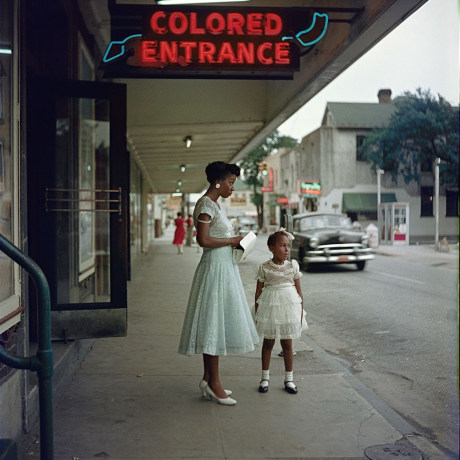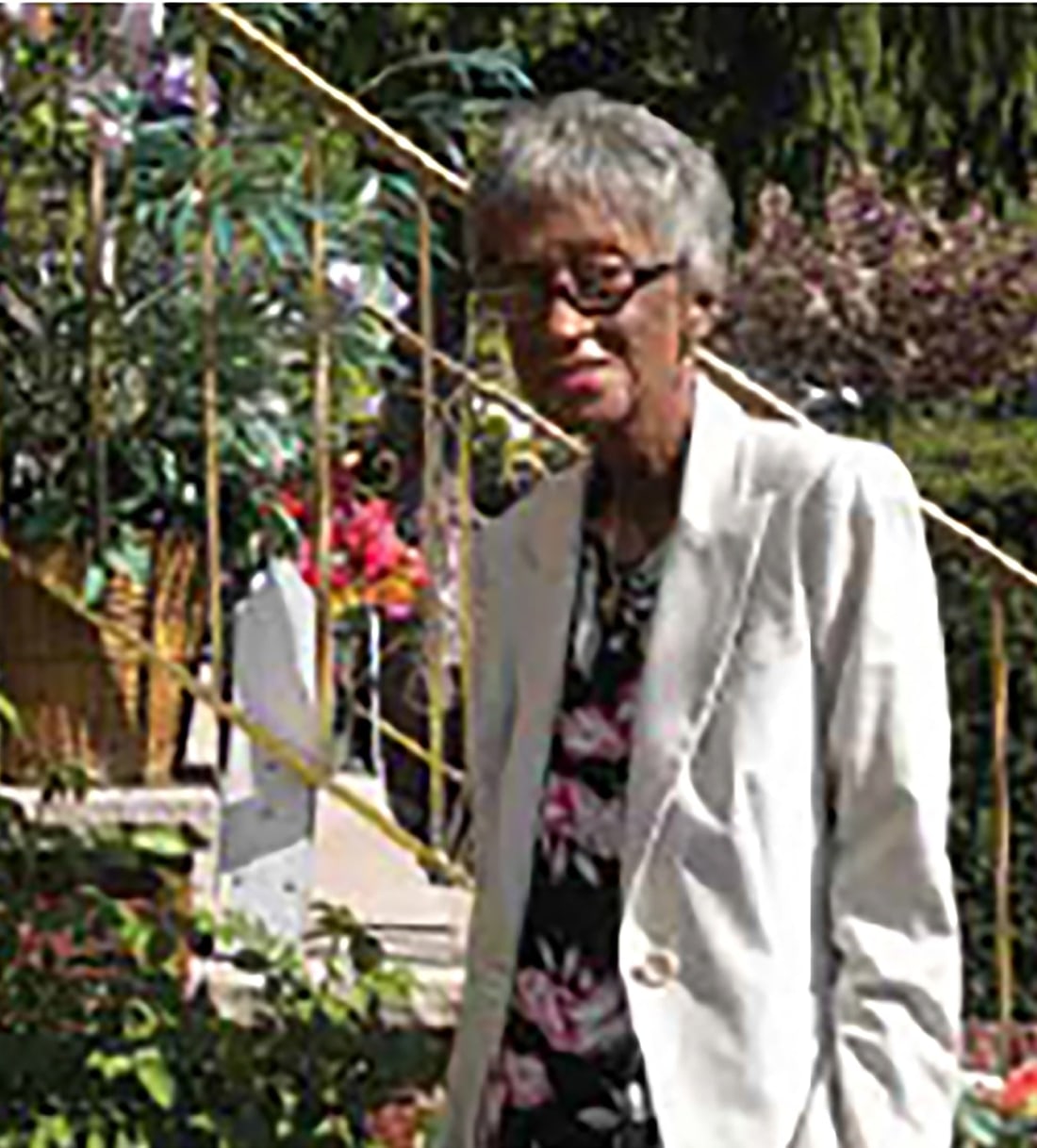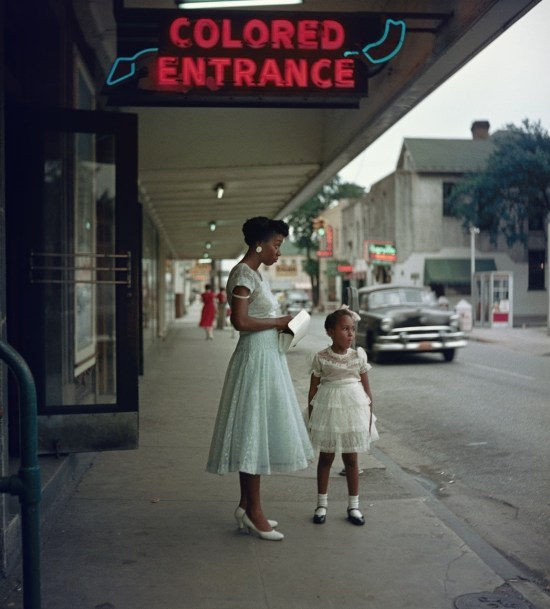

Joann Thornton Wilson, 2013
In September 1956, Gordon Parks published a photo-essay in Life magazine—“The Restraints: Open and Hidden”—which documented the everyday activities and rituals of one extended African American family living in the rural South under Jim Crow segregation. One of its most powerful images depicts Joann Thornton Wilson and her niece, Shirley Anne Kirksey. They are standing in front of a theater in Mobile, Alabama, perfectly attired in elegant, frilly dresses. The scene’s lighthearted mood is interrupted by a single, painful detail: the neon sign above them that reads, “Colored Entrance.”
We usually associate civil rights photography with dramatic images of historic events. But Parks’s photograph allows us to understand that the battle for racial equality and justice was waged not just through epic demonstrations, speeches, and conflagrations, but also through the quiet, but no less effective, actions of individuals.
Ms. Wilson was one such brave individual. White supremacists in the South understood the power of the camera to expose their actions and turn the nation against them. As Parks later recounted, the risk of retaliation for participating in the Life story was great, both to the photographer and his subjects. But neither Gordon Parks nor Joann Thornton Wilson would be intimidated.
When Ms. Wilson stepped out to enjoy an afternoon with her niece, she stepped into history through a single, brilliant photograph. What we see in Parks’s image is a determined and self-possessed woman, defying stereotypes and steeling herself against the poisonous tide of oppression that threatened to engulf her and her family. Her humanity under assault, she chose—in her own way—to fight back. In so doing, she helped change the world.
–Maurice Berger, 2013
Ms. Joann Thornton Wilson was honored at The Gordon Parks Foundation Annual Awards Dinner and Auction held on June 4, 2013.
The following text is an excerpt from Maurice Berger's 2014 essay, “With a Small Camera Tucked in My Pocket,” featured in Gordon Parks: Segregation Story, expanded edition, published by The Gordon Parks Foundation and Steidl, 2022
Determined to alter prevailing attitudes about race, Parks understood the value of empathy in his segregation pictures. Preeminently, he set out to challenge the myths of difference and aberrance that underwrote racism—misbeliefs that allowed one group to declare its superiority over another by capriciously ascribing to it negative traits, abnormalities, and pathologies. Nowhere is this challenge more effective than in Parks’s photograph of Joanne Wilson, the elder Thorntons’ daughter, and her young niece, a stunning image that never made it into the final publication. The two are pictured on a balmy summer afternoon standing in front of a movie theater in downtown Mobile, dressed in their Sunday best. The neon sign that looms overhead—“Colored Entrance”— casts a despairing shadow, transforming a relatively mundane scene into a powerful social commentary. Wilson, who would be honored fifty-seven years later by the Gordon Parks Foundation for her role in the historic project, had wondered why Parks did not ask her to correct her only sartorial flaw: the fallen strap of her slip. “I always wanted to look neat and nice,” she observes. “I did not want to be mistaken for a servant. Dressing well made me feel first class. I wanted to set an example.”
The oversight may have been intentional and strategic: it allowed Parks to stress the human side of an image that in its elegance and flair could at first be mistaken for one of his fashion photographs. In this context, Wilson, who went on to become a respected teacher of American government and economics at Mattie T. Blount High School in Prichard, Alabama, was not simply undoing racist attitudes and stereotypes through meticulous self-presentation. She was also attending to the demands of her daily life—like millions of Americans, Black and white—taking care of an active young child, but in an atmosphere of hostility and intimidation. The cost of meeting this responsibility, as anyone who has cared for a child might know, was the distraction that made her overlook the fallen strap. It is this poignant detail that helps us identify with Wilson. And it is this identification that, in turn, allows us to see and understand our shared humanity.
–Maurice Berger, 2014

Gordon Parks, Department Store, Mobile, Alabama, 1956